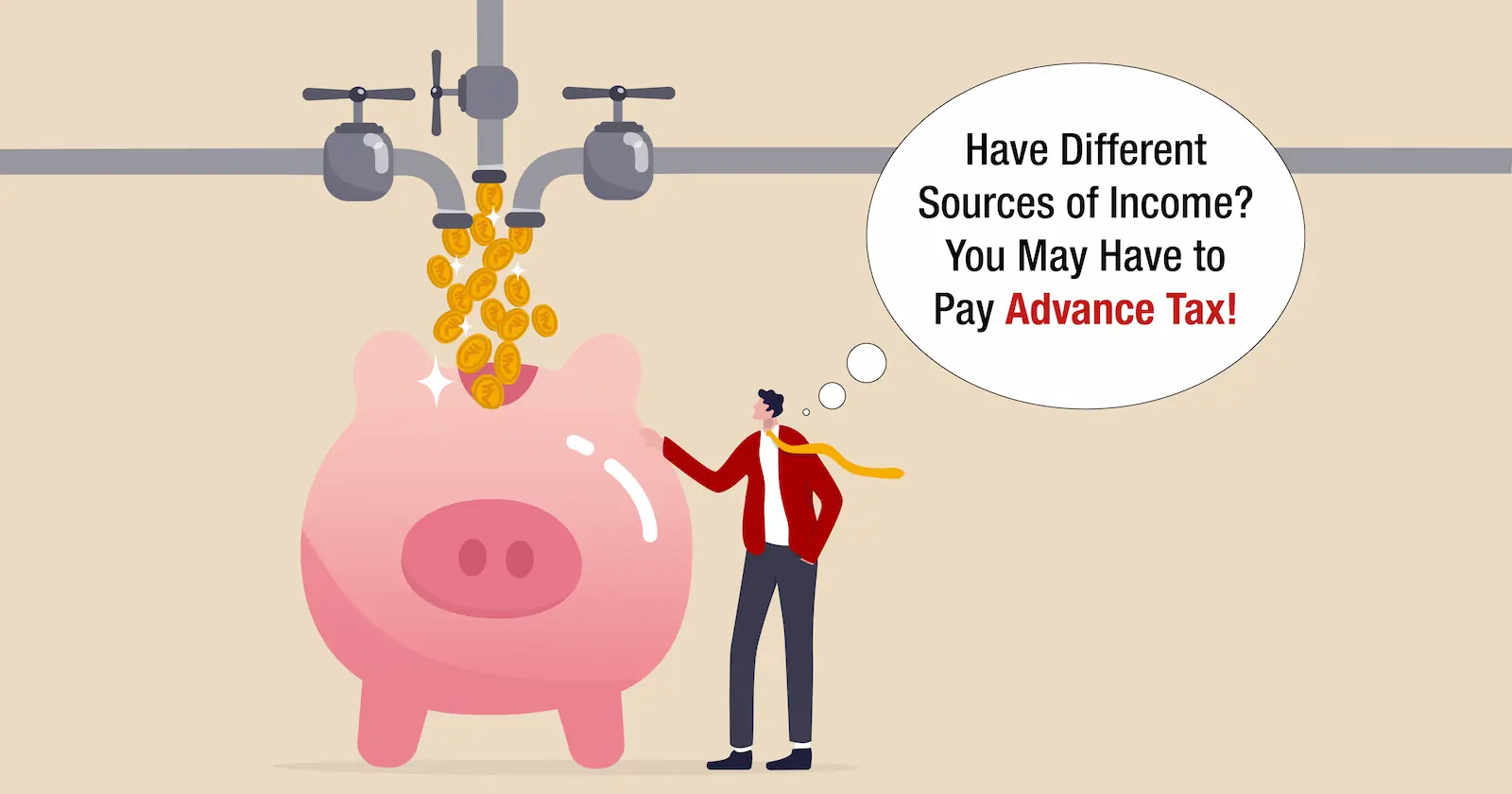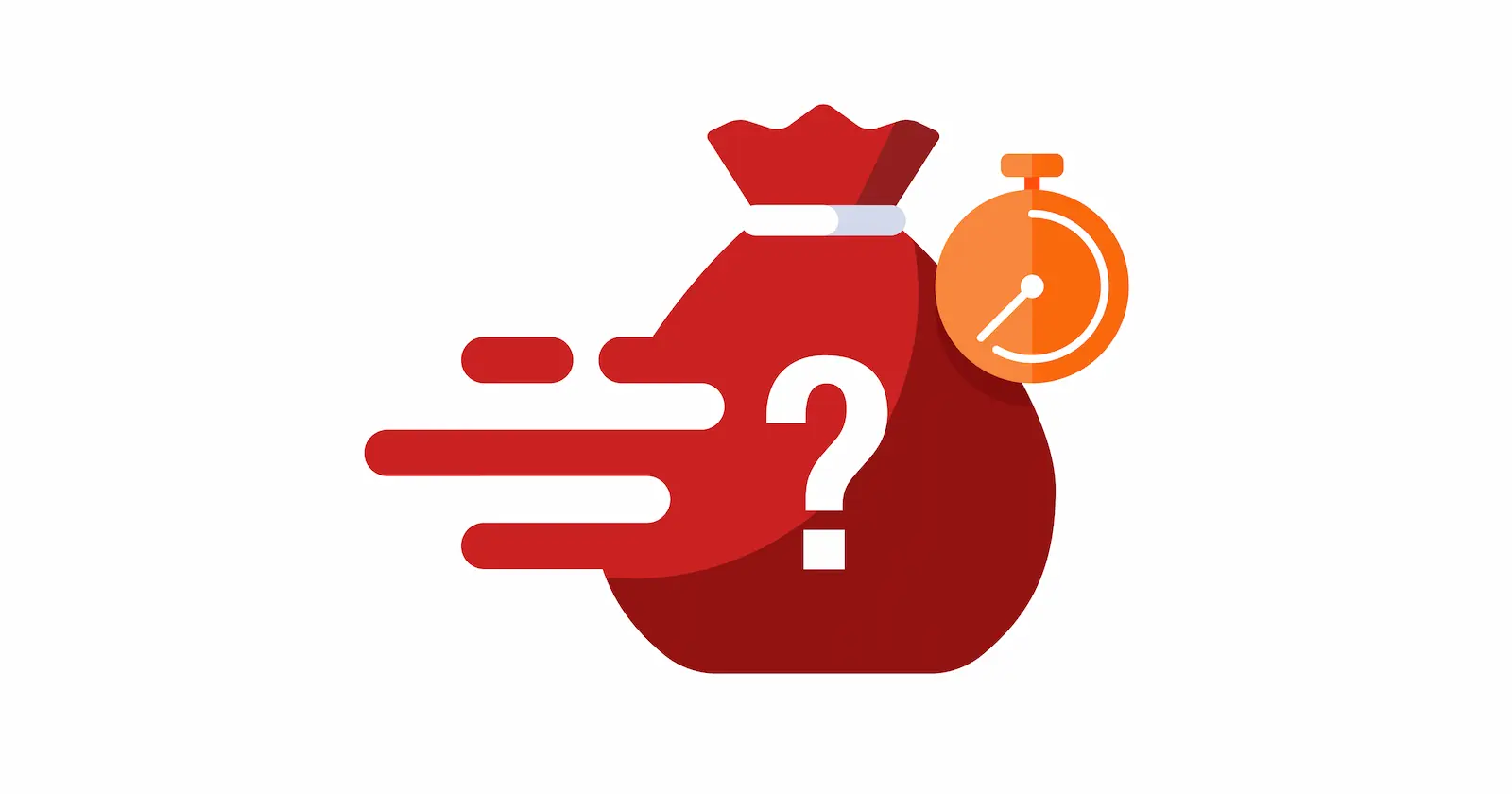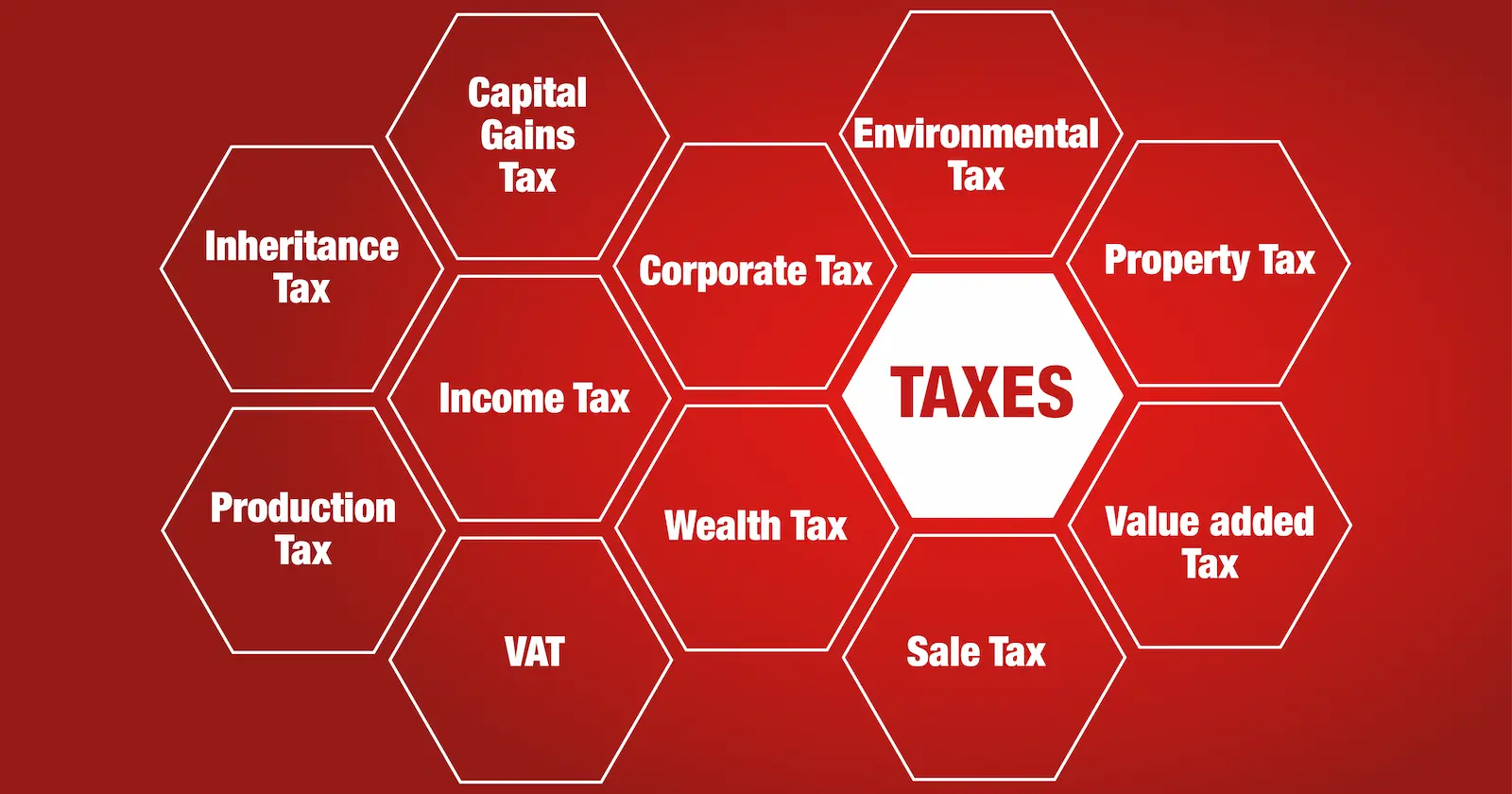What is Advance Tax Payment?
Advance tax can be described as income tax paid in advance for the income earned in a particular financial year. Usually, the tax is to be paid when the income is earned. As per the provisions of Income Tax Act related to advance tax, the payer has to estimate the income for the entire year. And based on this estimate the tax is paid at specific time intervals
Tax payment challans can be used to pay advance tax at bank branches that have been authorised by the Income Tax Department. It can be deposited in any of the authorised banks.
Another option for making an advance tax payment is to use the Income Tax Department's online tax payment website or the National Securities Depository.
Who is liable to pay Advance Tax?
In order to be liable (eligible) to pay advance tax, the following criteria must be meet:
As per section 208 of the Income Tax Act 1961, every person whose estimated tax liability for the year is more than or equal to `10,000 is liable to pay advance tax.
Those who are excluded from paying advance tax are Senior citizens, whose age is 60 years or more but have no income through business or profession.
- Your tax payable should be at least ₹ 10,000 or above.
- You should either be self-employed or salaried.
- Income earned or received on through capital gains on shares
- Fixed deposit interest earned.
- A lottery winner's winnings.
- Income or rent earned from a house property
What is the advance tax payment due date for FY 2022-23?
The final instalment of advance tax payment for Financial Year (FY) 2022-23 is due on March 15, 2023. Taxpayers must pay their entire advance tax liability by or before this due date.
Advance Tax for Taxpayers (apart from the ones who are covered under section 44AD or 44 ADA):
| Payment Due Date | Amount to be Paid as Advance Tax |
|---|---|
|
On or before 15 June |
15% of the Advance Tax |
|
On or before 15 September |
45% of the Advance Tax |
|
On or before 15 December |
75% of the Advance Tax |
|
On or before 15 March |
100% of the Advance Tax |
Which forms are required in advance tax?
On or before the deadlines, the form Challan No. ITNS 280 must be properly filed. The Challan No. ITNS 280 has the following preconditions:
- PAN Details - Make sure you share the proper PAN details, or your tax will be placed in the name of someone else.
- Assessment Year - Because the tax is being paid in advance for the following financial year, make sure you select the correct assessment year.
- Choosing a Payment Type - In the form, the taxpayer must choose a payment type as given below:
- It is advance tax if the tax is paid for the same fiscal year based on the estimated income.
- It is self-assessment tax if the tax is paid after the end of the financial year.
A Challan Identification Number (CIN) will be supplied after the payment has been received. You must keep a record of this information and utilize this CIN when filing your income tax return. Also, double-check whether the Income Tax Department has received the online payment which was made through TNS 280.
What is advance tax challan 280?
On the website of the Income Tax Department of India, Challan 280 enables users to make online income tax payments. On the website, one has to select this challan and fill the form and then use it to pay taxes online/offline. Download the Challan 280 form from the Income Tax Website, fill it out, and take it to the bank if you want to pay your taxes offline.
How to calculate advance tax? Explained with an Example
You can estimate your advance income tax liabilities by following the 4 simple steps:
- Estimate your income to be earned during the financial year
This includes making an estimate of possible annual income one might get. Interest income, rental income, capital gains, professional income, and any other types of incomes must all be combined.
- Calculate the cost associated with the expected income.
- The deductions you intend to make under Chapter VIA should be calculated.
- Calculate the overall tax payable.
Make sure to consider these points when calculating your tax payable:
- The tax slab rates applicable to you
- Tax rebate under Section 87A
- The TDS to be deducted by other taxpayers on your income
Example: Let us understand the entire process with the help of an example
Mr. Arun is a taxpayer who earned income under the head ‘Business and Profession’.
- Estimated Gross Receipts for the financial year– ₹ 22,00,000
- Estimated Expenses related to income earned- ₹ 10,00,000
- Payments from which TDS is to be deducted - ₹ 4,00,000
- Interest Income- ₹ 50,000
Let us calculate the liability now:
| Particulars | Amount (₹) |
|---|---|
|
Gross Receipts for the Financial Year |
22,00,000 |
|
Expenses Related to the Income Earned |
10,00,000 |
|
Income From Profession |
(22,00,000 – 10,00,000) = 12,00,000 |
|
Income From Other Sources - Interest on Fixed Deposit |
50,000 |
|
Total Income Chargeable to Tax |
12,50,000 |
|
Less: Deductions under Chapter VIA |
|
|
Investment in PPF Account |
– 50,000 |
|
Investment in ELSS Mutual Funds |
– 70,000 |
|
Investment in Tax-Saving Fixed Deposit |
– 30,000 |
|
Deduction under Section 80D |
– 30000 |
|
Total Taxable Income |
= 10,70,000 |
|
Tax Payable |
1,33,500 |
|
Less: TDS Deducted by other taxpayers |
(4,00,000 x 10%) = 40,000 |
|
Tax Payable in Advance |
93,500 |
Advance Tax Late Payment and Interest
Interest is charged for failure of paying advance tax under Section 234C. From the due date of each instalment until the day of actual payment, interest is applied at a rate of 1%. Here's the list of all the applicable interest rates and how interest is calculated:
If a taxpayer has not chosen to use presumed income:
| Simple Interest | Period of Interest | Amount on which interest is calculated | |
|---|---|---|---|
|
If Advance Tax paid on or before June 15 is less than 15% of the Net Amount* |
1% per month |
3 months |
15% of Net Amount* (-) tax deposited before June 15 |
|
If Advance Tax paid on or before September 15 is less than 45% of Net the Amount* |
1% per month |
3 months |
45% of Net Amount* (-) tax deposited before September 15 |
|
If Advance Tax paid on or before December 15 is less than 75% of Net Amount* |
1% per month |
3 months |
75% of Net Amount* (-) tax deposited before December 15 |
|
If Advance Tax paid on or before March 15 is less than 100% of Net Amount* |
1% per month |
Till the date of actual payment. |
100% of Net Amount* (-) tax deposited before March 15 |
*Net Amount = Tax liability on total income chargeable to tax (-) tax paid
Tax Paid in terms of relief, TDS, TCS, or Tax Credit
Process to pay advance tax online?
Any authorized bank branch which has been given the go-ahead by the Income Tax Department is where advance tax payments can be made offline. An alternative is to pay advance tax payment online.
Below are the steps for payment of advance tax online:
- Visit the Tax Information Network website at https://onlineservices.tin.egov-nsdl.com/etaxnew/tdsnontds.jsp
- Click on ‘Proceed’ under ‘Challan No./ITNS 280’ under ‘Non TDS/ TCS’
- Enter the information on the screen to generate the challan
Tax Applicable
- For Companies- select ‘(0020) Corporation Tax (Companies)’
- For Other than Companies- select ‘(0021) Income Tax (Other than Companies)’
Type of Payment
Choose '(100) Advance Tax' from the available options to make the payment.
Mode of payment
Choose your preferred payment method; you can use a debit card or net banking option. In all situations, you must choose the "Bank Name" option from the drop-down box.
- Enter your PAN (Permanent Account Number) details
- Enter the Assessment Year. Select the assessment year very carefully. An incorrect AY would need a rectification by applying to the assessing authority. Be very careful to avoid any hassle.
- Enter your address with city/ district, state, and PIN Code being mandatory fields and your email ID and mobile number
- Enter the captcha code displayed on the screen
- Click on Proceed
- You will be to the bank’s website to complete the transaction
- After completing the payment, you will receive the bank receipt. The bank receipt will contain the BSR code and challan serial number. Make sure for the future reference you save the challan copy.
How to download advance income tax payment receipt?
To view the advance tax payment challan, go to https://tin.tin.nsdl.com/oltas/index.html. Select CIN (Challan Identification Number) Based View. Enter the required details, and click on ‘View’. Once the challan information is visible on the screen, you have the option of printing it off or saving a screenshot. By accessing the website of the bank where the advance tax payment was made, taxpayers can also download the receipt or challan for the advance tax payment. There will be a choice to download the receipt for the advance payment.
Exemption in Advance Tax Payments
- Senior citizens (who is aged 60 years and above) and who rank as senior citizens and who also don’t own business establishments of any kind are those who are always exempted from making advance tax payments.
- The advance tax is not due from salaried people who fall inside the TDS net. However, advance tax will be charged on any earnings generated from sources including capital gains, interest income, rental income, and other non-salary sources of income.
- If TDS deducted is more than the tax payable for the year, then one does not have to pay the advance tax.
- Advance tax may also not be paid by tax payers who choose presumptive schemes in which business income is always assumed to be around 8% of the turnover.
- Business owners with a turnover of less than INR 2 crore may use presumptive schemes. Sections 44AE and 44AD deal with the presumptive scheme of paying income tax. Such schemes can be easily opted by business people whose annual business turnover is less than 2 cores. While the presumptive scheme for advance tax payments are usually reserved for business people alone, such a scheme has very recently been extended to architects, lawyers and doctors in the financial year 2016 to 2017 provided their yearly receipt totals to a maximum of Rs.50 lakhs.
Refund of Advance Tax
At the end of the financial year, in case the Income Tax Department finds out that you have paid more tax than you should have paid, then the IT department will refund the excess amount paid. By submitting the Form 30 the taxpayers can claim the refund. The taxpayer will have to file claim within a period of 1 year from the last assessment year.





Comments
a